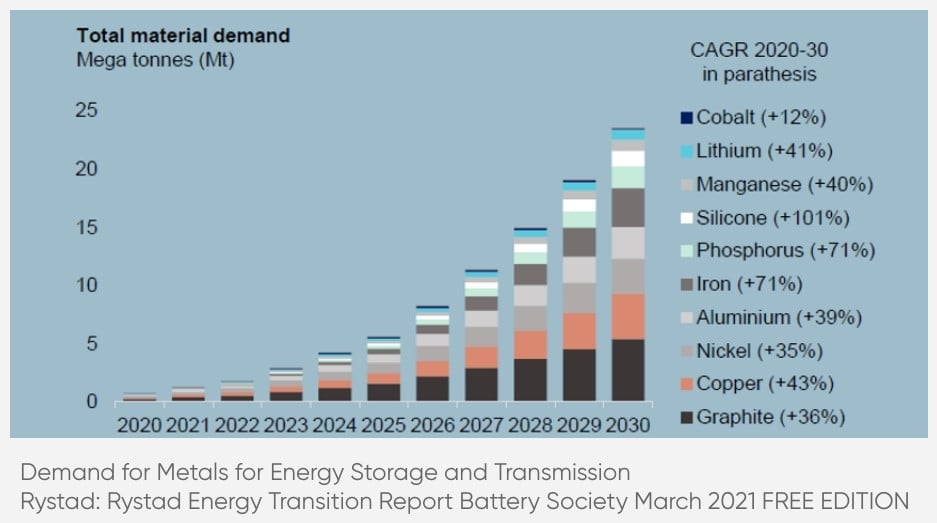LatAm's Energy Mix
This article discusses the energy mix in Latin America and adds flavour to George Buzan's EAGE Key Note at the Fourth EAGE/HGS Conference on Latin America.

George Buzan
Countries and companies in Latin America accepted the challenge to reduce GHG emissions to achieve the goals set by the Paris Accords of 2015. The mix of energy sources must migrate from the current one to something that resembles more the one projected by BP and others. The Circum Pacific Belt provides a unique opportunity for the region to grow its use of geothermal energy as an additional renewable method for producing electricity.
Latin America’s rich mineral resources are key to address the storage and transmission needs for the growing renewables generation. Important reserves of all key minerals exist on the continent. Geophysical information from Full Tensor Gravity Gradiometry (FTG) surveys will provide important information useful to achieving these goals.
Introduction
Signatories of the Paris Climate Accords in 2015 committed to reducing emissions of greenhouse gases (GHG) so that global warming would not exceed 1.5 degrees Celsius between then and the year 2050. The Accords charged the countries with developing their own plans for achieving the climate goals. All countries in Latin America and the Caribbean have since generated their plans.
National Oil Companies (NOCs), International Oil Companies and smaller independent oil companies differ in their approaches to achieving the net-zero carbon targets. These approaches include, improving field operational efficiency, establishing markets that will price carbon and provide credits, capturing and sequestering carbon and changing the sources of the energy that we use to produce electricity to use more renewable sources. A main part of the process becomes reducing the burning of fossil fuels as much as possible.
Latin America Energy Mix
BP projects that to reach the climate goals, the global energy mix should reach the point in 2050 where 45% comes from Photovoltaic Solar and Wind sources. Natural Gas usage would remain constant in its role in the mix accounting for approximately 22%. Oil and other renewables would account for about 15% each, of the mix. Coal usage shrinks to less than 5% of the mix.
IRENA data shows that in 2016, the energy mix in Latin America was 46% oil, 23% natural gas, coal 5%, 16% bioenergy/waste and 8% hydroelectric. Photovoltaic solar, wind and geothermal sources of energy each account for less than 1% in the energy mix.
.jpg?width=936&height=443&name=figure1%20(2).jpg)
Latin America should have no problem maintaining natural gas at a level of 23 % of the energy mix for the next thirty years. Colombia, Venezuela and Trinidad are all developing new gas projects, along with the Vaca Muerta in Argentina. However, there is not much room for natural gas to exceed the 23% in the energy mix since it has only 4% of the estimated (1P) natural gas reserves in the world.
Increasing the installation of photovoltaic solar farms and wind energy farms presents an opportunity and a challenge to the area. Favorable geography and climate conditions exist in the Patagonia and west coast of the continent for both forms of energy generation. The challenge will be to reach 45% or similar participation in the energy mix from such a small base to start with.
A hundred years ago, when the world started the transition from coal as the major energy source to oil, explorationists began using geophysics to improve their success in finding new reserves. Gravity gradiometry was the first geophysical technique used to find oil and improve drilling results. It was used extensively along the Gulf Coast in Mexico in the 1920’s. The Poza Rica field was discovered in 1930 based on gravity gradiometry data. Seismic and other methods followed. Advances in gradiometry acquisition equipment, computing power and software for processing and interpreting data sustain its relevance as a tool for identifying new reserves of natural resources, mineral or energy.
.jpg?width=940&height=788&name=Slide-1-copy-1%20(6).jpg)
Geothermal Energy in Latin America
As a region Latin America produces only 1% of its energy geothermically. However, as a subregion, Central America produces 10% of its energy from geothermal sources. The expertise in Central America can be translated to the southern area of the continent. The region has a privileged position geographically when it comes to geothermal energy. The west coasts of the Americas form part of the Circum Pacific Belt, an area noted for tectonic activity and high geothermal gradients.
Airborne Full Tensor Gravity Gradiometry (FTG) provides a geophysical tool for identifying potential geothermal sources of energy. Bell Geospace can illustrate how the McConville 2018 Geothermal Study Area illustrates this well. McConville acquired land gravity information to supplement existing data from the State of Nevada in order to assess the areas potential for geothermal energy production. Later an FTG survey was performed over an area that included the McConville survey exploring for hydrothermal gold. The ground gravity and the FTG survey validated each other well. The FTG data added value with the horizontal tensor elements resolving issues associated with the connectivity of the faults seen in the ground data. Additionally, FTG’s curvature analysis served to define better the structural complexity of the area. The final interpretation of the FTG data provided several new areas prospective for the generation of geothermal energy. An additional benefit of the FTG survey was its rapid acquisition unhindered by terrain or other access problems. Interested parties can request to view this material, or subscribe to the blog for the related article coming soon.
Latin America’s Role – Storage and Infrastructure Metals
The drive to increase the energy produced by renewable sources generates the need for more energy storage and transmission infrastructure. It is estimated that in this decade of 2021-2030, increase in renewable energy production will require the construction of another approximately 25 million kilometers of transmission line. The inevitable fluctuations in the electricity produced by renewable resources requires storage capacity, batteries. Between the need for transmission infrastructure and battery storage, the compound annual growth rate of demand for metals involved in those processes reaches double digits for the next 20 years.
The graphic in Figure 3 indicates that key metals for the storage and transmission needs include Cobalt, Lithium, Manganese, Phosphate, Iron, Nickel and Copper. Latin America contains over 50% of the world’s lithium reserves, while holding 20% of the world’s reserves of Manganese, Iron and Nickel. Principally Mexico, Peru and Chile account for approximately 40% of the world’s copper reserves. Cobalt is a key metal in that it will be used in transmission and storage. Cuba produces a notable amount of cobalt every year; however, the region doesn’t account for any noticeable amount of cobalt reserves.
Growing already known reserves of these metal ores will begin with brownfield exploration and segue into greenfield exploration. FTG will serve as a key geophysical tool for finding near field ore bodies as well as new reserves in areas not explored at this time.

More Discussion?
To learn more about FTG technology you can visit the Bell Geospace technology pages or get in touch with the team to see case studies or have a private discussion.
If you have a potential project in mind, why not apply for a free feasibility study.
We also welcome public commentary below.
Receive Bell Geospace Articles To Your Inbox
Would you like to receive the next installment directly to your email?
